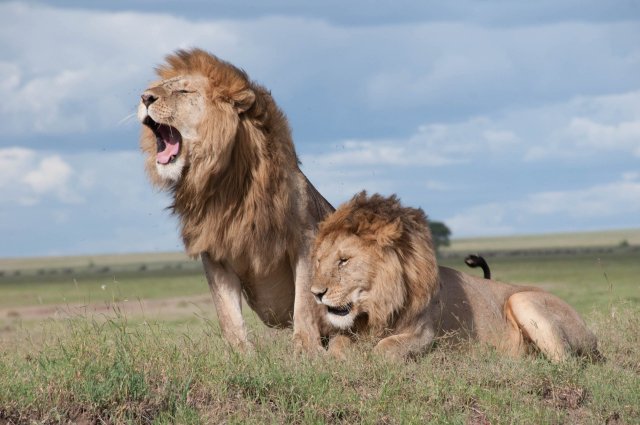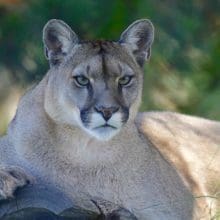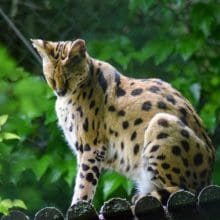7 Essential Tips for Preserving Lions in Their Natural Environment
The Urgent Call to Action: Preserving Lions for a Thriving Ecosystem
Lions, often referred to as the “king of the jungle,” are majestic creatures that have captivated humans for centuries. However, their population has been rapidly declining in recent years due to various factors such as habitat loss, poaching, and human-wildlife conflict. It is crucial to take immediate action to preserve these magnificent animals and ensure their survival in their natural environment. In this article, we will explore seven essential tips for preserving lions and securing their future.
1. Protecting Lion Habitats
The first step in preserving lions is to protect their natural habitats. Lions primarily inhabit grasslands, savannas, and open woodlands. However, these habitats are under constant threat from human activities such as agriculture, urbanization, and infrastructure development. To safeguard lion habitats, it is essential to establish protected areas, national parks, and wildlife reserves where lions can roam freely without human interference. These protected areas should be well-managed and adequately funded to ensure the long-term conservation of lion populations.
2. Combating Poaching
Poaching is one of the most significant threats to lion populations. Lions are hunted for their body parts, which are highly valued in traditional medicine and illegal wildlife trade. To combat poaching, strict anti-poaching measures should be implemented, including increased law enforcement, intelligence gathering, and collaboration with local communities. Additionally, raising awareness about the negative impacts of poaching and promoting alternative livelihoods for communities dependent on poaching can help reduce the demand for lion products.
3. Promoting Coexistence with Local Communities
Human-wildlife conflict is a major challenge in lion conservation. As human populations expand, conflicts arise when lions come into contact with livestock and crops. To promote coexistence, it is crucial to engage and involve local communities in conservation efforts. This can be achieved through education and awareness programs, providing incentives for communities to protect lions, and implementing measures to mitigate conflicts, such as building predator-proof enclosures for livestock and promoting sustainable farming practices.
4. Strengthening Conservation Laws and Policies
Strong legal frameworks and policies are essential for effective lion conservation. Governments should enact and enforce laws that protect lions and their habitats. These laws should include strict penalties for poaching, habitat destruction, and illegal wildlife trade. Additionally, international cooperation and collaboration are crucial to combat transnational wildlife crime and ensure the enforcement of conservation laws across borders.
5. Supporting Community-Based Conservation Initiatives
Community-based conservation initiatives have proven to be successful in preserving lion populations. These initiatives involve local communities in conservation activities and provide them with incentives to protect lions and their habitats. For example, the Maasai Wilderness Conservation Trust in Kenya works closely with local communities to conserve lions and other wildlife by providing education, healthcare, and sustainable livelihood opportunities. Supporting such initiatives financially and through partnerships can significantly contribute to lion conservation.
6. Investing in Research and Monitoring
Research and monitoring play a crucial role in understanding lion behavior, population dynamics, and threats they face. Investing in research initiatives, such as radio-collar tracking and genetic studies, can provide valuable insights into lion conservation. Monitoring lion populations through camera traps and satellite tracking can help identify population trends, movement patterns, and areas of high conservation priority. This information is vital for making informed decisions and implementing targeted conservation strategies.
7. Promoting Responsible Tourism
Tourism can be a double-edged sword for lion conservation. On one hand, responsible tourism can generate revenue for conservation efforts and raise awareness about the importance of protecting lions. On the other hand, irresponsible tourism can disrupt lion behavior, degrade their habitats, and contribute to human-wildlife conflict. It is crucial to promote responsible tourism practices, such as maintaining a safe distance from lions, following ethical guidelines, and supporting eco-friendly accommodations and tour operators that prioritize conservation.
Summary
Preserving lions in their natural environment requires a multi-faceted approach that addresses various threats and engages different stakeholders. Protecting lion habitats, combating poaching, promoting coexistence with local communities, strengthening conservation laws, supporting community-based initiatives, investing in research and monitoring, and promoting responsible tourism are all essential components of lion conservation. By implementing these seven essential tips, we can ensure the long-term survival of lions and continue to admire their beauty and significance in the natural world.
engages different stakeholders. Protecting lion habitats, combating poaching, promoting coexistence with local communities, strengthening conservation laws, supporting community-based initiatives, investing in research and monitoring, and promoting responsible tourism are all essential components of lion conservation. By implementing these seven essential tips, we can ensure the long-term survival of lions and continue to admire their beauty and significance in the natural world.
Read More About Preserving Big Cats From Wikipedia




